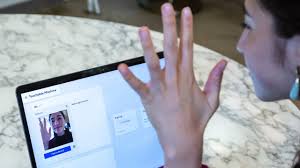Source: techxplore.com
What, it’s that easy to grasp machine learning basics? Good news from Google’s Teachable Machine crew. Previously, the Teachable Machine provided lessons on how AI works but a new 2.0 puts you to work in making your machine learning model come to life in apps, websites and more.
A number of websites got busy over the last few days to say that Google updated the Teachable Machine program to give users more training tools.
Bradly Shankar in MobileSyrup.com talked about what’s special about 2.0. “Models can be uploaded for online use or saved for native use on the device. Further, AI models can now be trained based on sound and poses, on top of the regular image data.”
Ivan Mehta in TNW similarly explained what was special. “The earlier version allowed you to train three classes through your camera. The new model, not only lets you define more than three classes, it also allows you to use images, audio clips, pose data, or your own dataset for the training.”
All in all, you can train AI models not just on images but based on sound and poses.
“Teachable Machine 2.0: Making AI easier for everyone” is a video posted on Nov. 7. The video message was that the new 2.0 could make it both it fast and easy to create machine learning models for your projects, no coding required. “”You train a computer to recognize your images, sounds, and poses without writing any machine learning code. Then, use your model in your own projects, sites, apps, and more.”
If some people feel nervous that working with machine learning would be over their heads, the team behind Teachable Machine would like to take away that fear and replace it with enthusiasm. “Machine learning is pretty intimidating to get into,” said the narrator. “So we’ve been wondering. What if it wasn’t?”
Say hello to Teachable Machine 2.0. They are setting out to make it easier for anyone to create machine learning models. Cantaloupe orange. Shady sunny. Water on Water off. Teachable Machine now puts the power in your hands. The narrator is eventually joined by a co-narrator who says, “So let’s say you want to build a model using a picture of you and a picture of your dog.” You open up the site, record samples of you, and samples of your dog. Click train.
You can upload your model, too, to host it online or download it. Teachable Machine is flexible; the Teachable Machine site said it’s respectful of the way you work. You can use it entirely “on-device, without any webcam or microphone data leaving your computer,” said the site.
Kyle Phillips, Google Creative Lab, wrote a blog post about the new capabilities on Nov. 7. How it works: You can use Teachable Machine to recognize images, sounds or poses. “Upload your own image files, or capture them live with a mic or webcam. These examples stay on-device, never leaving your computer unless you choose to save your project to Google Drive.” Teachable Machine from Google Creative Lab goes to work to train a model based on the examples you provided.
The training happens in your browser, he said; everything stays in your computer.
In the video, the presenter had said that “folks” have already been trying it out, that is, using Teachable Machine in their own experiments.
Phillips, meanwhile, reported on specific cases.
Education researcher Blakeley Payne and her team have been using Teachable Machine as part of a curriculum that teaches middle-schoolers about AI through hands on experience.
Steve Saling, focused on accessibility technology, used it to explore communication for people with impaired speech.
Yining Shi has been using Teachable Machine with students in the Interactive Telecommunications Program at NYU to explore its potential for game design.
Tensorflow.js, an open-source library for machine learning from Google, plays a part in all this; it powers the model you create. As the Teachable Machine site said, “The models you make with Teachable Machine are real Tensorflow.js models that work anywhere javascript runs, so they play nice with tools like Glitch, P5.js, Node.js & more.”
If you still need convincing it is really as easy as it looks and sounds,, this will help. Check out another video where you see the narrator talk about Teachable Machine 2.0.
The Engadget verdict? Jon Fingas weighed in, with perspective. “This clearly isn’t the most sophisticated AI system, but it doesn’t have to be. It’s still an educational tool at heart, and the support for projects makes it that much more useful for demonstrating AI concepts in the real world.”
So, which version is better to use, the first or this latest one?
“In a nutshell,” said the web site for Teachable Machine, “if you’re say, a teacher who just wants to quickly demo of how machine learning works and don’t need to save anything, use the first version from 2017. If you want to save your model and create a working project, use the latest version.”
